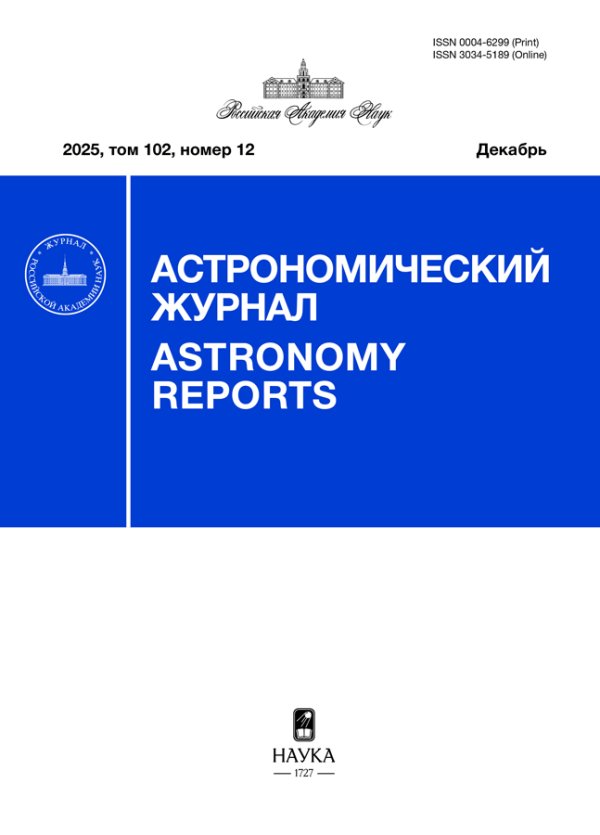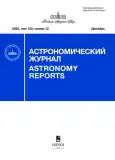Astronomy Reports
ISSN (print): 0004-6299
Media registration certificate: № 0110223 от 08.02.1993
Founder: Russian Academy of Sciences (RAS), Institute of Astronomy of the Russian Academy of Sciences
Editor-in-Chief: Dmitry V. Bisikalo, ORCID iD: 0000-0003-2025-5564
Number of issues per year: 12
Indexation:
- RISC,
- Higher Attestation Commission list,
- RISC core,
- RSCI,
- White List (2nd level)
Astronomičeskij žurnal is an international peer reviewed journal that publishes original papers on astronomical topics, including theoretical and observational astrophysics, physics of the Sun, planetary astrophysics, radio astronomy, stellar astronomy, celestial mechanics, and astronomy methods and instrumentation.
- Recognized for excellence since 1924
- Coverage includes astronomy, including theoretical and observational astrophysics, physics of the Sun, planetary astrophysics, radioastronomy, stellar astronomy, celestial mechanics, and astronomy methods and instrumentation
- Publishes chronicles and proceedings of international conferences
Current Issue
Vol 102, No 12 (2025)
Articles
THREE MODELS OF THE GRAVITATIONAL POTENTIAL OF THE MILKY WAY
Abstract
 1055–1067
1055–1067


INTERSTELLAR MEDIUM IN EXTREMELY HIGH STAR FORMATION REGIONS: A PROSPECT OF OBSERVATIONS ON THE “MILLIMETRON” SPACE OBSERVATORY
Abstract
 1068–1086
1068–1086


ABOUT STARK BROADENING OF RECOMBINATION RADIO LINES IN THE ORION A NEBULA
Abstract
 1087–1094
1087–1094


THE INFLUENCE OF VARIATIONS OF ELEMENTAL COMPOSITION OF A GAS ON THE MOLECULAR KINETICS
Abstract
 1095–1108
1095–1108


OH MASER EMISSION IN THE REGION OF ACTIVE STAR FORMATION W51M
Abstract
 1109–1120
1109–1120


SU UMa-TYPE DWARF NOVA MASTER OT J212624.16+253827.2 IN PERIOD GAP: ORBITAL PERIOD AND NEGATIVE SUPERHUMPS
Abstract
 1121–1131
1121–1131


RESULTS OF MONITORING OF MAGNETAR SGR 1935+2154 FOR 2021–2024
Abstract
 1132–1136
1132–1136


RRAT SEARCH ON DECLINATIONS FROM +42° TO +55° WITH A NEURAL NETWORK
Abstract
 1137–1146
1137–1146


ACTIVITY CYCLES OF SOLAR-TYPE STARS WITH SUPERFLARES
Abstract
 1147–1156
1147–1156


METHOD FOR DETERMINING THE PARAMETERS OF A RING-LIKE STRUCTURE FROM THE VISIBILITY FUNCTION SHAPE
Abstract
 1157–1171
1157–1171


DISTANT TRANS-NEPTUNIAN OBJECTS IN THE SOLAR SYSTEM WITH ADDITIONAL OUTER PLANETS
Abstract
 1172–1179
1172–1179


CHARACTERISTICS OF THE ENSEMBLE OF CLOSE POTENTIALLY HAZARDOUS ASTEROIDS
Abstract
 1180–1192
1180–1192


CHANGES IN THE ASTROCLIMATE OF TADJIKISTAN'S HIGH MOUNTAIN OBSERVATORIES
Abstract
 1193–1202
1193–1202












